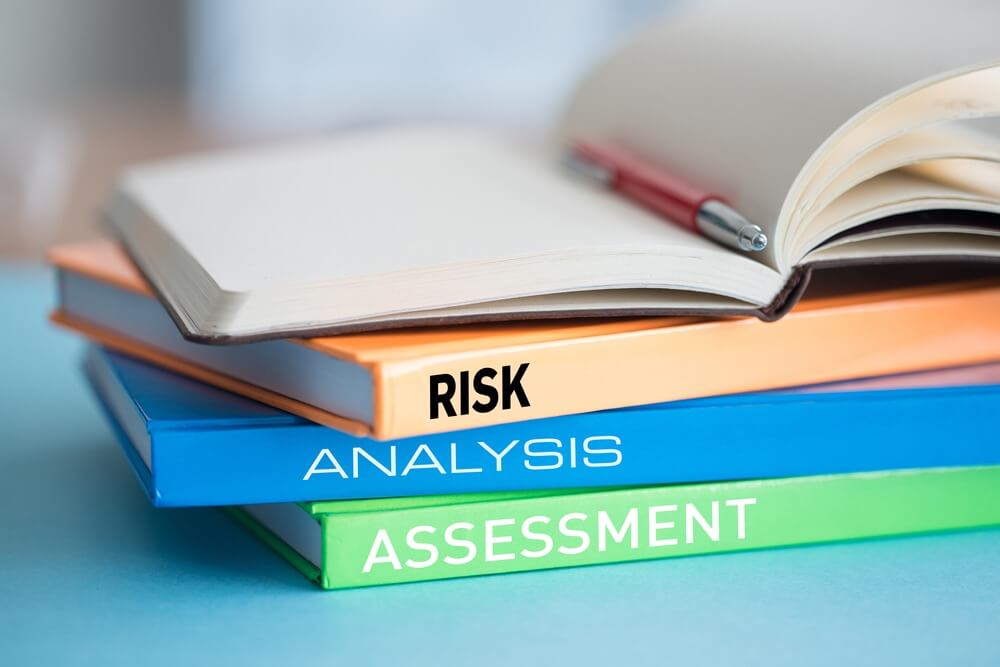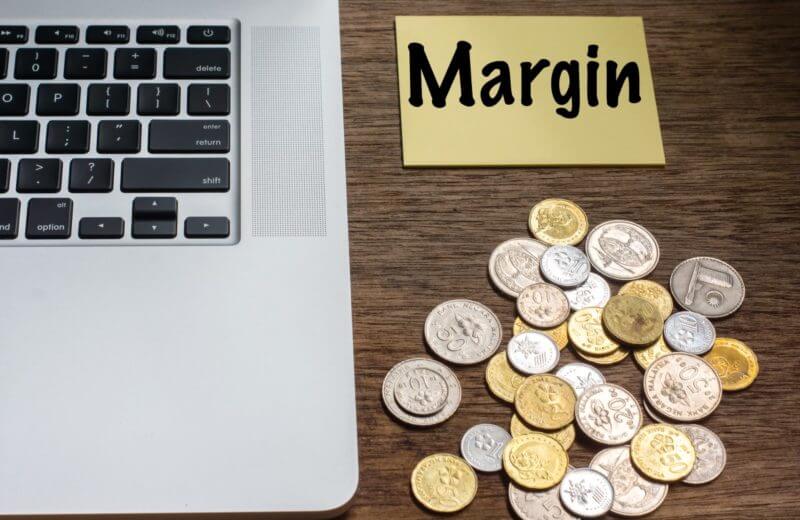Managing risks effectively is crucial for success in the ever-evolving world of cryptocurrency trading. The volatile nature of the crypto markets can lead to significant profits and considerable losses.
This article delves into the intricacies of crypto risk management, exploring strategies to identify, evaluate, and mitigate risks, ensuring that traders can safeguard their capital while striving for rewarding returns.
Understanding Crypto Risk Management
Crypto risk management is the cornerstone of any successful trading strategy in the highly unpredictable world of digital assets. It involves a systematic approach to identifying, assessing, and mitigating potential risks that could impact trading outcomes. The primary goal is to protect the trader’s capital while maximising profitability. Given the rapid pace at which the crypto market moves, having a robust risk management framework is beneficial and necessary.
Key Strategies for Effective Risk Management

#1. Stop-Loss Orders
One of the most fundamental strategies in risk management is setting stop-loss orders. A stop-loss order is an automated instruction to sell a cryptocurrency when it reaches a specific price, limiting potential losses. By implementing stop-loss orders, traders can prevent their losses from escalating during market downturns, ensuring they do not erode their capital base.
#2. Diversification
Diversification involves spreading investments across various cryptocurrencies to mitigate risk. By holding a diversified portfolio, traders can reduce the impact of a poor-performing asset on their overall portfolio. This strategy leverages various cryptocurrencies’ different risk profiles and performance metrics, ensuring a balanced approach to risk.
#3. Fundamental and Technical Analysis
Employing fundamental and technical analysis allows traders to make informed decisions based on thorough research. Fundamental analysis involves evaluating the intrinsic value of a cryptocurrency by examining factors such as the project’s team, technology, and adoption rate.
Technical analysis, on the other hand, focuses on historical price data and market patterns to predict future movements. Together, these analyses provide a comprehensive understanding of market dynamics.
#4. Risk-Reward Ratio
Establishing a concrete risk-reward ratio for each trade is essential. This ratio compares the potential risk of a trade to its potential reward, guiding traders in making decisions that align with their risk tolerance and investment goals. A commonly recommended risk-reward ratio is 1:3, where the potential reward is three times greater than the potential risk.
#5. Discipline
Maintaining discipline in trading is crucial. Traders should adhere strictly to their trading plans and reassess their techniques as the market evolves. This involves staying patient and avoiding emotional decision-making, which can lead to significant losses. Regularly reviewing and updating trading strategies based on market conditions helps maintain a disciplined approach.
Measuring Risks in Crypto Trading
Before implementing risk management strategies, traders must measure the risks associated with their trades. This involves considering various factors and using multiple tools and methods to gain a holistic view of potential risks:
#1. Volatility Analysis
Volatility analysis involves assessing the historical volatility of a cryptocurrency to gauge its potential risk. High volatility indicates greater price fluctuations, translating to higher potential gains and losses. Understanding the volatility of an asset helps traders set appropriate stop-loss and take-profit levels.
#2. Fundamental Analysis
Evaluating the fundamentals of a cryptocurrency project is critical. This includes examining the project’s team, the technology behind it, its use case, and its adoption rate. A project with strong fundamentals will likely succeed long-term, reducing the associated investment risk.
#3. Technical Analysis
Technical analysis uses historical price data, chart patterns, and various indicators to predict future price movements. Traders can make more informed decisions by identifying trends and potential reversal points. Tools such as moving averages, relative strength index (RSI), and Bollinger Bands are commonly used in technical analysis.
#4. Market Sentiment
Market sentiment plays a significant role in the price movements of cryptocurrencies. Monitoring social media platforms, news outlets, and forums can provide insights into the community’s perception of a particular cryptocurrency. Positive sentiment can drive prices up, while negative sentiment can lead to sharp declines.
#5. Quantitative Metrics
Quantitative metrics such as the Sharpe ratio are used to measure risk-adjusted returns. The Sharpe ratio compares the return of an investment to its risk, providing a clearer picture of its performance relative to its volatility. A higher Sharpe ratio indicates a more favourable risk-adjusted return.
#6. Diversification and Stop-Loss Orders
Diversification and stop-loss orders are strategies and methods of measuring risk. By diversifying their portfolios and setting stop-loss orders, traders can effectively assess their exposure to different risks and mitigate potential losses.

Risk Management Tips for Crypto Traders
Efficient risk management in crypto trading requires a combination of strategies and tools tailored to individual risk tolerance and trading objectives. Here are some practical tips for managing risks effectively.
#1. Aim for Optimal Risk-Reward Ratios
Traders should aim for a risk-reward ratio where the potential reward is at least double the potential risk. This helps achieve a favourable balance between the risk taken and the potential profit. For instance, if a trade has a risk-reward ratio of 1:2, the potential profit should be twice the potential loss.
#2. Use Sharpe and Sortino Ratios
The Sharpe and Sortino ratios are valuable tools for assessing risk-adjusted returns. The Sharpe ratio measures the performance of an investment compared to a risk-free asset, taking into account its volatility. Conversely, the Sortino ratio differentiates between harmful and overall volatility, providing a more refined risk assessment.
#3. Position Sizing
Determining the size of each trade based on risk tolerance is crucial. Position sizing involves calculating the amount of capital to allocate to a trade, ensuring that no single trade can significantly impact the overall portfolio. This strategy helps in maintaining a balanced approach to risk.
#4. Hedging
Hedging involves using financial instruments such as futures contracts to offset potential losses. Traders can protect their portfolios from adverse price movements by taking an opposite position in a related asset. Hedging is particularly useful in highly volatile markets with unpredictable price swings.
Essential Tools for Risk Management

#1. Stop-Loss Orders
As mentioned earlier, stop-loss orders are automated instructions to sell an asset when it reaches a certain price. This tool is essential for protecting against excessive losses and controlling trading outcomes.
#2. Take-Profit Orders
Take-profit orders are the counterpart to stop-loss orders. They allow traders to secure profits by automatically selling an asset when it reaches a predetermined price. This ensures that gains are realised and not lost due to subsequent market downturns.
#3. Leverage Management
Using leverage can amplify both profits and losses. Therefore, managing leverage is crucial. Traders should use leverage cautiously, ensuring they fully understand the risks and avoid over-leveraging their positions.
#4. Diversification
Diversifying investments across different assets remains among the most effective risk management strategies. By spreading investments, traders can reduce the impact of a poor-performing asset on their overall portfolio.
#5. Risk Management Platforms
Online risk management platforms offer visualisation tools to calculate potential losses and profits. These platforms provide insights into portfolio performance, helping traders make informed decisions. They can track various metrics and simulate scenarios, enhancing risk assessment and management capabilities.
8 Types of Risks in Crypto Trading

#1. Market Risk
Market risk refers to the potential for losses due to fluctuations in the market. The highly volatile nature of cryptocurrencies means that prices can change rapidly, leading to significant gains or losses.
#2. Liquidity Risk
Liquidity risk arises when buying or selling a cryptocurrency becomes difficult due to lacking buyers or sellers. Low liquidity can lead to slippage, where trades are executed at unfavourable prices, impacting profitability.
#3. Regulatory Risk
Regulatory risk involves uncertainties due to government regulations. Changes in laws and regulations can affect the legality and viability of certain cryptocurrencies, impacting their prices and the broader market.
#4. Counterparty Risk
Counterparty risk is the risk that the other party in a trading transaction will not fulfil their obligations. This is particularly relevant in decentralised finance (DeFi) platforms and peer-to-peer (P2P) trading.
#5. Overtrading Risk
Overtrading involves excessive trading, often driven by emotional decision-making. This can lead to poor trading outcomes and increased transaction costs, eroding profits.
#6. Emotional Trading Risk
Emotional trading risk refers to the potential for losses due to decisions driven by fear, uncertainty, and doubt (FUD) or fear of missing out (FOMO).
#7. Leverage Risk
Leverage risk involves the amplified effects of using borrowed capital to trade cryptocurrencies. While leverage can increase potential returns, it also magnifies potential losses, making it a double-edged sword.
#8. Holding Risk
Holding risk pertains to the potential loss from hacking when keeping assets on an exchange or in a hot wallet. Ensuring the security of assets through cold storage and other security measures is vital.
Conclusion
Effective crypto risk management is a multifaceted process that requires a deep understanding of market dynamics, a well-rounded approach to measuring risks and implementing robust strategies and tools. By adhering to diversification, disciplined trading, and stop-loss and take-profit orders, traders can confidently navigate the volatile crypto markets.















